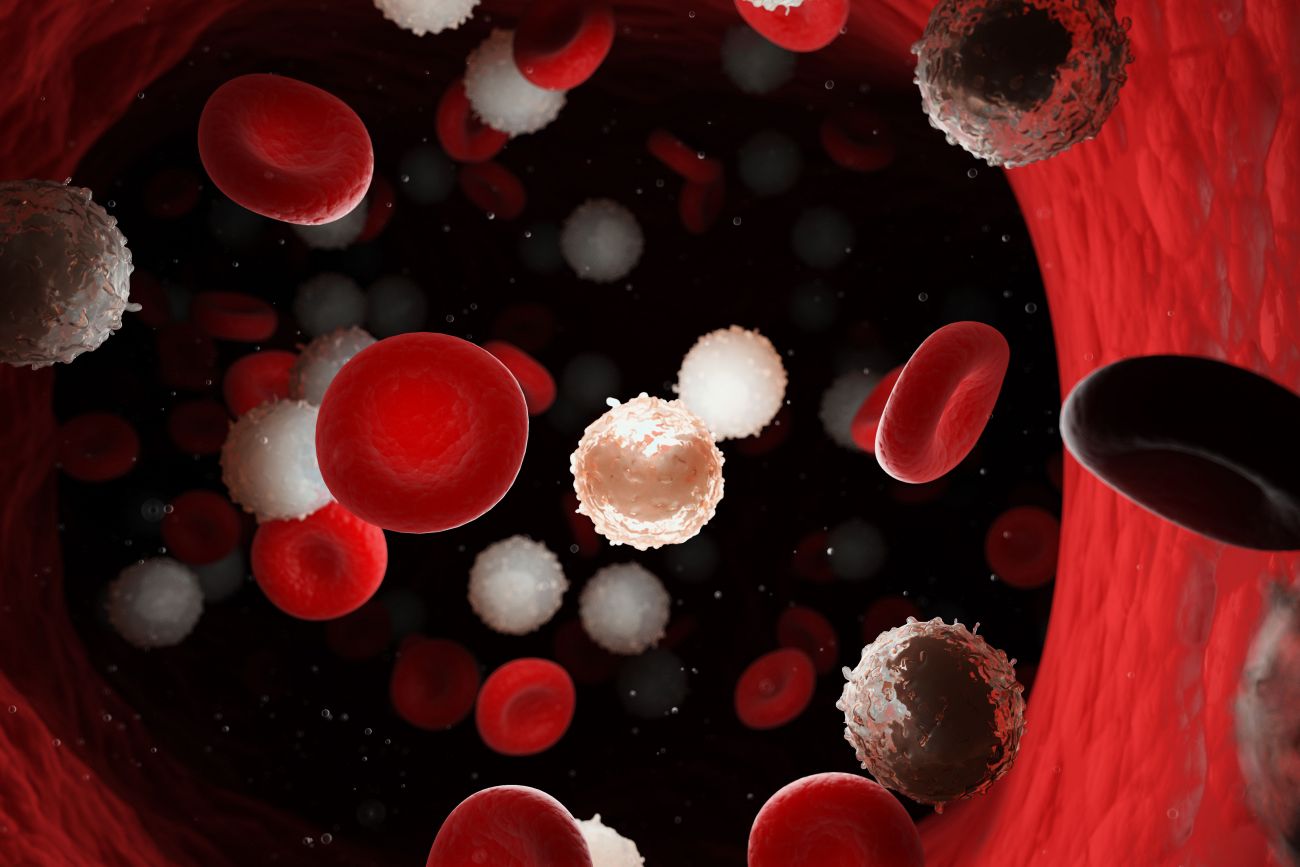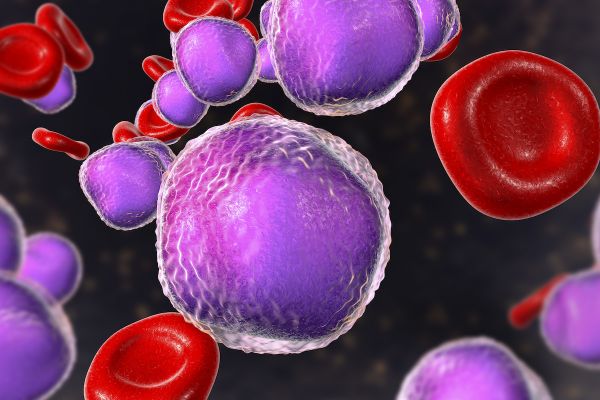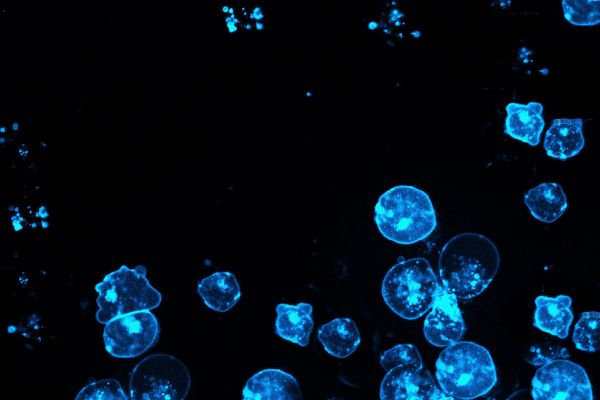Why our cancer specialists treat these blood diseases
Mast cell disorders occur when mast cells, a type of blood cell important in the immune system, overreact to certain triggers. These disorders can affect many body systems and produce symptoms such as a severe allergic reaction, skin growths and gastrointestinal issues. Some can lead to cancer: mast cell leukemia and myeloproliferative neoplasms (MPNs) are mast cell disorders that are rare and complex types of blood cancer.
Mast cell disorders are essentially blood diseases,” says Elizabeth Griffiths, MD, hematologist and Director of MDS at Roswell Park Comprehensive Cancer Center. “As a comprehensive cancer center, we have experience with state-of-the-art testing, diagnosis, treatment and research for all types of blood diseases, including those very rare ones that develop into blood cancers. Many patients have struggled with their symptoms without relief for years. We can help them.”
What are mast cell disorders?
If you’ve ever had an allergic reaction to a drug or a bee sting, then you’ve experienced a mast cell reaction. Mast cells, a type of blood cell produced in the bone marrow, help fight infection. Present in all body tissues, they react to foreign substances and injury by releasing various chemicals, including histamine.
In a healthy person, these chemicals act to protect and heal the body. However, in a person with mast cell activation syndrome (MCAS), mast cells are excessively sensitive to various triggers — including specific foods, exercise, chemicals, heat, cold, fragrances, insect and animal bites and stress.
In some people, MCAS can develop into other mast cell disorders, as described below.
Type of Mast Cell Disorder | Caused By | Symptoms/Notes |
|---|---|---|
Mast Cell Activation Syndrome | Excessive mast cell sensitivity to various triggers. Many sufferers struggle to identify triggers and continue to discover new triggers for many years after diagnosis. | Affects both children and adults. Onset is often sudden and may be episodic or cyclic. Symptoms often affect more than one body system and may include: itching, rash, swelling, inflammation, vomiting, fatigue, headache, GI symptoms, bone pain, chills and/or sweats, achiness and anaphylactic shock. |
Cutaneous Mastocytosis | Mast cells gather in the skin, but are not found in large numbers elsewhere in the body. | Occurs mostly in children. Symptoms include: abnormal growths (lesions) on the skin, such as bumps and spots, which can form on the body and sometimes blister. Most children outgrow this. |
Systemic Mastocytosis | Mast cells gather in body tissues, such as the skin, internal organs and bones. A suspected gene mutation (KIT mutation) makes mast cells more sensitive to the effects of a protein that stimulates production of blood cells and mast cells in bone marrow. | Occurs mostly in adults, and symptoms include those listed above for MCAS. Some people may experience episodes of severe symptoms that last 15-30 minutes, often with specific triggers such as physical exertion or stress. The three types of systemic mastocytosis are: indolent, aggressive, and mast cell leukemia. (See below.) |
Indolent systemic mastocytosis |
| Symptoms are usually mild to moderate, and the disorder progresses slowly. Indolent mastocytosis accounts for around 90% of adult systemic mastocytosis cases. |
Aggressive systemic mastocytosis | Mast cells multiply in organs including the spleen, liver and digestive system. | Symptoms are more wide-ranging and severe, although skin lesions are less common. Can result in organ damage and failure. |
Mast cell leukemia | Too many immature mast cells accumulate in bone marrow and blood. May develop in patients who have a buildup of mast cells caused by aggressive systemic mastocytosis. | Mast cell leukemia is a rare and aggressive type of acute myeloid leukemia. It is difficult to treat and has a poor prognosis (outcome). |
Myeloproliferative Neoplasms (MPNs) | The body produces too many of a specific type of blood cell, or abnormal cells cause scarring in bone marrow tissue. | Extremely rare. May cause bleeding problems, anemia, infection, fatigue or other signs and symptoms. Some myeloproliferative neoplasms may become acute myeloid leukemia (AML). |
A team approach to diagnosing and treating mast cell disorders
“The baffling thing about mast cell disorders is that their symptoms are so wide-ranging and can mimic many things,” says Dr. Griffiths. “Typically, patients at our mast cell disorder program have struggled with symptoms without relief, and are referred to us by allergists, dermatologists, gastroenterologists, orthopedists and immunologists.”
Because mast cell disorders can involve and affect multiple body systems, Roswell Park’s team of experts includes gastrointestinal specialists, dermatologists, oncologists and pathologists who specialize in the diagnosis and treatment of blood disorders. In fact, Dr. Griffiths plays a national role in setting the standard of care for treating myeloproliferative neoplasms (MPNs) as a member of the MPN Guidelines Panel of the National Comprehensive Cancer Network (NCCN).
These diagnoses are difficult ones, and patients will need the same comprehensive care that Roswell Park experts provide for cancer. “Our team also includes financial counselors, social workers and psychologists, to help patients deal with financial concerns, depression and other concerns that often affect those with chronic conditions,” says Dr. Griffiths.
Getting an accurate diagnosis
“When a patient is referred to Roswell Park’s mast cell disorder program, we perform a series of tests to help us pinpoint a diagnosis,” Dr. Griffiths explains. These include:
- Complete blood count, to look for indicators of mast cell disorders in the blood (low platelets and hemoglobin) and liver (low albumin).
- Digital droplet PCR test. A new technology at Roswell Park, digital droplet tests, detect KIT gene mutations and elevated levels of certain mast cell proteins more accurately than traditional PCR tests used at most labs.
- Imaging such as bone scans, CT skeletal survey, CT of the abdomen (to check for liver or spleen enlargement).
- Biopsy of bone marrow, skin and/or any affected organs (to check for evidence of abnormal mast cells) and GI endoscopy (to check for gastrointestinal abnormalities).
“We can do all of these things right here at Roswell Park, and then quickly have our specialists review results and consult with others on our mast cell disorder team,” says Dr. Griffiths.
Never miss another Cancer Talk blog!
Sign up to receive our monthly Cancer Talk e-newsletter.
New treatments in the pipeline
“After diagnosis, our focus turns to treatment,” says Dr. Griffiths. Therapies for milder cases include treatment with steroids, antihistamines, epinephrine auto-injector pens (such as EpiPens) and working with patients to help them identify their mast cell triggers.
Aggressive mastocytosis and mast cell leukemia usually require chemotherapy with midostaurin, currently the only FDA-approved drug for treatment of these diseases.
While the long-term survival rate for aggressive mastocytosis and mast cell leukemia remains poor, Dr. Griffiths and a research team at Roswell Park hope to change that by providing access to the latest treatment advances. “We just completed phase 1 of a clinical trial for a new drug to treat these diseases, with very promising results, and will be conducting another clinical trial shortly. In the meantime, we are one of the few cancer centers in the world that has obtained permission to use this trial drug for compassionate care use in extenuating circumstances,” says Dr. Griffiths.
For more information about our mast cell disorder treatment and research efforts, call 1-800-ROSWELL (1-800-767-9355).




